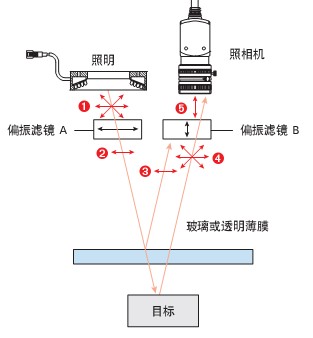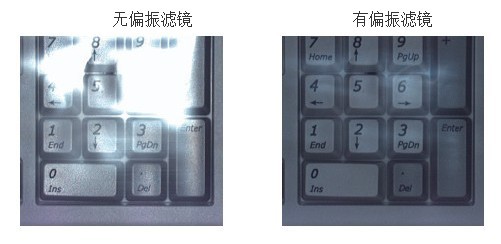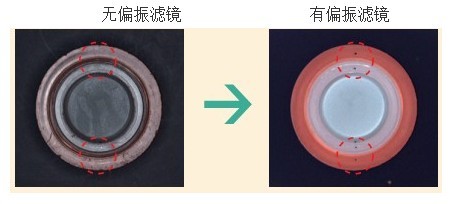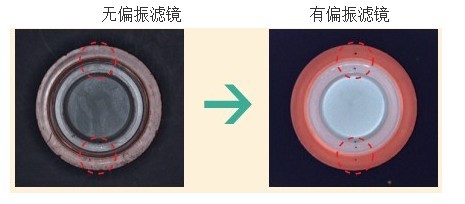Service Support
 >Service Support
>Service Support
Inspection principle and application comparison of machine vision polarizing filters
更新时间:2014-06-09阅读:476次
The inspection principle of polarizing filters: the light ① becomes light ② through polarizing filter A; part of light ② is reflected by the glass surface which is like a mirror and becomes mirror reflected light ③; the rest of light ② reflected by the target surface becomes light ④; light ④ scattering occurs through the glass surface; light ④ can passes through polarizing filter B to become light ⑤ and enters camera; the light ③ which forms luster is intercepted and eliminated by polarizing filter B. As shown below:
Application examples of polarizing filters:

Example 1 inspect printing defects of the keyboard through film

The image on the left displayed that the glare makes the image fuzzy without the use of a polarizing filter. The image on the right shows the use of a polarizing filter to eliminate the glare successfully.
Example 2 inspection of plastic cover defects

Without a polarizing filter, the gloss on the plastic surface leads to a low contrast, and thus the defects is covered. Defects become visible in the case of using polarizing filters to eliminate the surface gloss.
Example 3 edge control of transparent film

When using the back light to observe the edge of the transparent film, the edge looks blurred if not using polarizing filters. However, in the case of using polarizing filters to make the film dark, the contrast in the same background becomes higher, which makes the visual inspection more stable.





